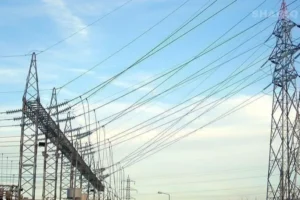
Amid growing fears of war in Europe, Germany is working to implement a plan enabling the swift movement of as many as 800,000 soldiers to the front should war break out with Russia, according to a Wall Street Journal report published Thursday. The report is based on a classified 1,200-page document obtained by the newspaper that details Germany’s preparations and the obstacles facing the plan.
Also on Thursday, France announced a new voluntary military service program for young people, due to launch in mid-2026, aimed at strengthening the country’s capabilities in the face of what officials describe as accelerating global threats.
Germany began drafting its plan, known as OPLAN DEU, at a special military gathering held roughly two and a half years ago at a base near Berlin. The classified document maps out the routes for moving NATO forces eastward through ports, rivers, rail lines and roads, as well as the methods for supplying and protecting those forces.
German soldiers train during a military exercise. Photo: AFP
Thanks to its geography and central position on the continent, Germany would become a critical logistical hub in any major conflict with Russia, serving as the main corridor for NATO troops heading east. Look at the map, said Tim Stuchtey, head of the Brandenburg Institute for Society and Security. With the Alps forming a natural barrier, NATO forces will have to cross Germany in any clash with Russia, regardless of where hostilities begin.
According to the report, the plan outlines a comprehensive approach to war that seeks to mobilize society and civilian infrastructure for a battlefield effort. It amounts to a return to Cold War thinking, while grappling with new challenges such as aging infrastructure, insufficient legislation and much smaller Western armies than in past decades.
The Journal noted that German officials believe Russia will be ready and willing to strike NATO in 2029. Yet multiple incidents across Europe involving espionage, sabotage attacks and airspace intrusions, many attributed to Moscow, suggest Russia could prepare for an attack even earlier. Analysts quoted in the report warned that a possible cease-fire in Ukraine might free up Russian time and resources to plan a move against NATO countries.
Russian President Vladimir Putin and the Russian warplanes that entered Estonian airspace. Photo: AP, AFP AP, AFP
The planners argue that strengthening Europe’s resilience would not only ensure victory but also reduce the likelihood of war. The goal is to prevent war by making clear to our enemies that if they attack us, they will not succeed, a senior officer involved in drafting the plan told the newspaper.
The report describes an exercise held this fall in eastern Germany in which Rheinmetall, the country’s largest defense company, built a temporary camp for 500 soldiers including housing, showers, fuel stations, a field kitchen and anti-drone protection. The camp was constructed in 14 days and dismantled in seven. Imagine building a small town from scratch and taking it down within days, said Rheinmetall’s Marc Lemmermann.
But the drill also exposed shortcomings. The site was too small for all the vehicles, and the land plots were not adjacent, forcing troops to shuttle back and forth. The plan faces additional challenges such as cumbersome procurement rules, rigid information laws and regulations not adapted for wartime conditions.
“We have to relearn what we once knew”, said Deputy Defense Minister Nils Schmid. “We need to bring people out of retirement to remind us how we used to do this.”
The article highlights the deterioration of Germany’s military preparedness since the end of the Cold War. Whereas highway segments were once designed to double as emergency landing strips, jet fuel tanks were buried beneath parking lots, and guardrails could be removed within minutes, the years since have brought new tunnels and bridges that are too narrow or too weak for military convoys.
Germany’s existing infrastructure has also decayed. Officials in Berlin estimate that 20 percent of the Autobahn network and more than a quarter of bridges require repair. North Sea and Baltic ports need an estimated 15 billion euros in upgrades, including 3 billion for military-related improvements.
Another exercise in September underscored Europe’s unpreparedness. The drill, known as Red Storm Bravo, was meant to simulate on a small scale the massive troop movements envisioned by the German plan. Five hundred NATO soldiers were supposed to land at a port and travel east in convoy. But things quickly went wrong. Protesters, who were actually reservists, jumped from bushes and glued themselves to the road. The soldiers were not permitted to remove them, and police realized they lacked the tools to do so. It took two hours before the convoy could move again, ultimately covering only about ten kilometers.
The threat is not theoretical. Earlier this month, damage was discovered on the Warsaw-Lublin rail line, a critical route for delivering military aid to Ukraine. An investigation found that an explosive device had been detonated remotely, with suspicion directed at Russia. The chief of staff of Poland’s military, Gen. Wieslaw Kukula, said the enemy has begun preparations for war, adding that the situation is not war but pre-war, or what many call hybrid war. Poland has attributed the sabotage to Russia.
A new model of a German tank on display. Photo: Getty Images
The German and French measures are part of a broader European trend. In March, European Commission President Ursula von der Leyen unveiled an 800-billion-euro rearmament program. “We are in an era of rearmament”, she said. Europe is prepared to increase defense spending massively: at a NATO summit in The Hague in June, alliance members agreed to raise their defense-spending target from 2 percent to 5 percent of GDP by 2035.
France’s announcement on Thursday came as President Emmanuel Macron introduced a new voluntary military service program for 18- to 19-year-olds. Scheduled to begin in mid-2026, the program will run for ten months and cost 2 billion euros. It will initially recruit 3,000 participants, rising to 10,000 by 2030, with Macron hoping to reach 50,000 by 2036.
The French move followed an announcement earlier this month by Germany’s governing coalition parties, who agreed on a new voluntary-based recruitment model, leaving open the possibility of mandatory service if volunteer numbers fall short. Macron made clear that France will not follow that path. There is no going back to the days of conscription, he said. This hybrid army model fits the threats and risks we face. France aims to reach 100,000 reservists by 2030, up from about 47,000 today.
Macron’s announcement came as controversy erupted over remarks made last week by France’s chief of staff, Gen. Fabien Mandon, who said France must be prepared to lose its children to deter Russia. What we lack is the strength of spirit to endure hardship to defend who we are, he told a gathering of mayors.





